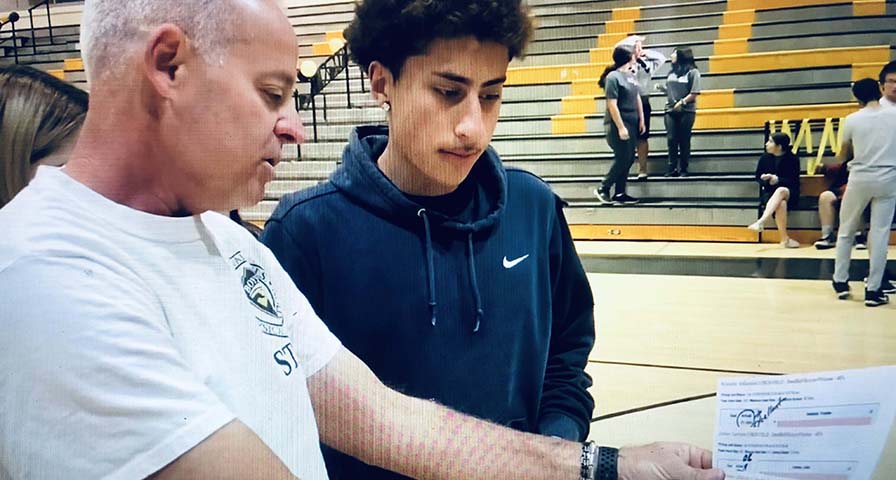Watching his high school students go all-out in his physical education classes more than validates San Bernardino City Unified High School District PE Specialist Scott Smith’s decision to add IHT ZONE wrist heart rate monitors to his program in 2019.
“I knew this would have a big impact but I didn’t think it would be this big,” Smith said.
Students – at least when he last saw them in person before his district shifted entirely to online learning during the height of the pandemic – embraced moderate to vigorous physical activity and worked harder than they had before to meet daily goals for minutes of MVPA. And they did that with little prodding from Smith and his teaching colleagues.
Smith said the IHT ZONE heart rate monitors, which show students exactly where their heart rate is throughout their class session, empowered students to turn over a new leaf. When Smith evaluated his PE program in 2016, the data – his observations and feedback compiled through a student survey – showed a program in disarray.
Students weren’t doing the bare minimum to pass the class, fewer than half the students participated on any given day and self-esteem suffered.
“We couldn’t keep going down that path,” Smith said. “We weren’t getting results and we were not meeting the needs of our students. Every day was a struggle.”
The IHT heart rate monitors became the final piece of a multi-year effort to rebuild the program. By giving students choices about their daily activities and stressing the benefits of movement, Smith turned the program around. Adding the technology took the improvements to another level.
Compared to the 2016 survey, a 2019 student survey showed his PE classes in an entirely different light.
“Our lessons started reflecting the future and we became a 21st century program,” Smith said. “We have innovative lessons promoting MVPA. We use the technology to assess students honestly, fairly, individually. That’s what has supercharged it for us.“
- 71% of students felt encouraged to set their own fitness goals;
- 83% said heart rate monitors made PE relevant to them;
- on a scale of 1 (bad) to 5 (good), 94% rated their PE experience either 4 or 5.
“The monitor puts them in control of themselves,” Smith said of his students. “That’s it. They get a true assessment and they celebrate when they meet their goals.”
Smith said no singular event summarizes those survey results than a small-sided soccer game in which he challenged students to reach the yellow (moderate heart rate zone as indicated on the heart rate monitor) zone by the end of a 6-minute game. If anyone hadn’t gotten into the yellow zone before the game ended, everyone would run two laps around the gym to get their heart rates up.
“It became fascinating to watch,” Smith said.
Students not only ran hard after the ball, but they also saw they couldn’t waste time standing still. What started as a soccer game evolved into a fitness workout with a hint of soccer. Students shouted out ideas and exercises that would get the group’s heart rate up. Meeting Smith’s goal became a team effort.
“You see them doing things like jumping jacks when they aren’t near the ball,” he said. “They understand. They are trying to move. We get toward the end of it and all of a sudden all 10 kids stop playing soccer and start running up and down the bleachers. They were doing it because they couldn’t get themselves out of the blue zone by playing soccer. They were working together and talking and they figured out what they needed to do.”
Smith originally purchased 168 IHT heart rate monitors – enough for three teachers to impact six sections each with an average of 50 students. The success prompted Smith to seek – and receive – funding to add another 1,200 monitors that will reach students across the district when the 2021-22 school year begins. Whether students are back on campus or continuing to learn remotely, they’ll use the technology to drive themselves to get healthier.
“Our program was stuck in 20th-century education,” Smith said. “IHT has given us a gift to make a difference in every kid or student’s life. The impact can be lifelong.”
Learn More about the Spirit heart rate monitor.


